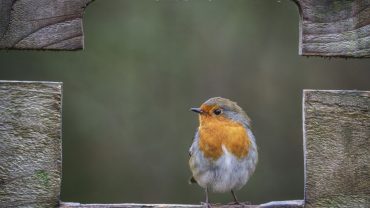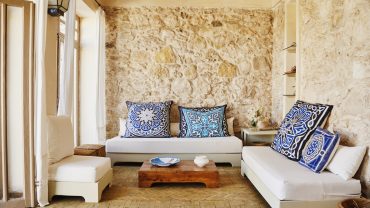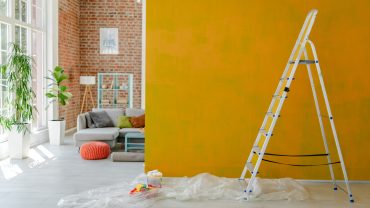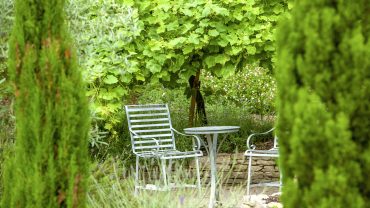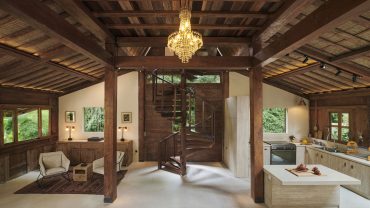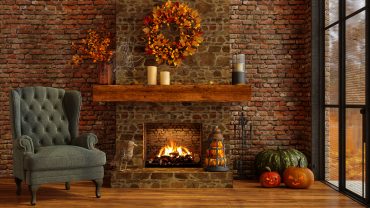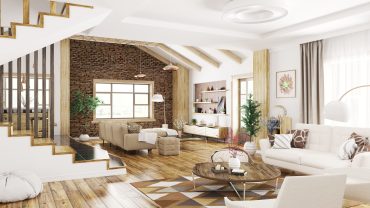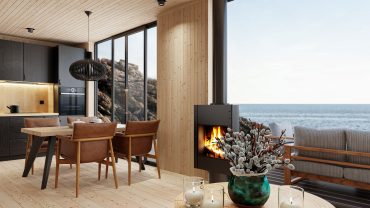The right mix of patterns can bring a room to life with dimension, depth, and personality. From paisleys and plaids to florals and geometrics, pattern pairing offers a smart way to create interest and character. However, successful interior design pattern mixes need more than just bold choices, they benefit from thoughtful planning. With a few simple rules, seemingly clashing prints can come together in visual harmony.
This guide breaks down how to master interior design pattern combos which feel cohesive, not chaotic. Without further ado, let the layering begin.
Mixing Patterns: Bold Meets Beautiful

A sense of personal style (Credit: John Keeble via Getty Images)
Blending patterns is a striking way to add personality, flair, and a distinct sense of style to any room. It’s a visual language that’s somehow both considered and daring, without ever veering into feeling cluttered or chaotic. As a general rule, achieving this balance means coordinating the elements of colour, scale, and style. How? Let’s find out.
Colour Cohesion

Cohesive colours (Credit: Onzeg via Getty Images)
The first step in mixing patterns is finding a common thread to tie it all together. Almost invariably, this will be the colour scheme. Limiting the palette to between three and five core colours provides a visual anchor for even the boldest print combinations. And the most straightforward way to select those colours is by taking inspiration from one statement piece with a detailed pattern. This might be a geometric area rug, a floral wallpaper, or a richly patterned headboard. Whatever the case, its colours can provide a foundation from which to build.
Playing with Scale

Botanical prints pair well with wood (Credit: Maria Korneeva via Getty Images)
With the colours for the room selected, it’s time to turn to picking patterns. One of the main principles in doing this successfully is contrast, both in size and structure. While two bold patterns of the same scale may battle for attention, pairing opposites often translates into coordination. For instance, by placing broad stripes beside a finely detailed botanical print, each is allowed to shine without overpowering the other. What’s more, such juxtaposition guides the eye naturally through the room. So, a dramatic motif might dominate one corner, while smaller patterns soften the rest of the scene. Layered this way, interior design pattern mixes feel both deliberate and dynamic.
Blending Motif Families

Floral print wallpaper and a solid wood floor (Credit: AzmanL via Getty Images)
Pairing floral prints with stripes or checks with paisley may seem bold, but done right, these combinations add richness and intrigue. The key lies in maintaining harmony through other elements. As we’ve seen, colour does a lot of the work in this regard, transforming potential clashes into a cohesive design. For instance, a leaf-patterned curtain can complement a grid-style area rug if both share a tonal palette and balanced proportions. These sorts of interior design pattern mixes inject personality without sacrificing unity.
The Role of Solids

A solid wall is a visual breather (Credit: onurdongel via Getty Images)
Patterned interiors need pauses. That’s where solids come in. Acting as visual breathers, they prevent overstimulation and let statement patterns take centre stage. The most effective tones to apply in this role are neutrals. From walls in soft cream and charcoal bedding to beige upholstery, these can offer calm and structure, enhancing the impact of surrounding patterns.
Textiles as a Tool

Different textiles add interest to a room (Credit: Per Magnus Persson via Getty Images)
Textiles are among the most versatile ways to experiment with interior design pattern combos. Cushions, throws, curtains, and rugs are easy to swap and layer, allowing for trial and error. Beyond their patterns, textiles add tactile interest. A herringbone wool blanket, a velvet floral cushion, and a linen stripe curtain each bring unique texture. And mixing these materials enriches the room further, supporting the aesthetic with sensory variety.
Repetition for Rhythm

Pattern repetition creates a cohesive look (Credit: Onzeg via Getty Images)
Repetition provides continuity. So, a pattern seen on a scatter cushion might reappear on a lampshade or in the background of framed artwork. Similarly, a single accent colour might pop up across various motifs, offering subtle reminders that tie the scheme together. This repetition acts like a melodic refrain, weaving through the room and giving it a cohesive, intentional feel.
Spreading the Pattern

Spreading the patterns helps with balance (Credit: KatarzynaBialasiewicz via Getty Images)
Concentrating all patterning in one area can feel heavy. Dispersing it throughout different heights and surfaces ensures a more balanced composition. A patterned floor rug, midline prints on furniture, and higher-level motifs in artwork or curtains allow the eye to travel comfortably through the space. As a general guide, three distinct patterns – coordinated in scale and colour – can provide variety without disorder.
Personality Through Print

Create a space for you, not someone else... (Credit: Andreas von Einsiedel via Getty Images)
Patterns carry narrative potential. A vintage paisley passed down through generations, a bold abstract print picked up on travels, or a handcrafted textile from a local artisan, each has a story. Incorporating such pieces adds emotional depth to the space. These personal touches infuse the interior with authenticity and warmth, transforming it from a styled set into a lived-in sanctuary.
Pattern Perfect

The art of mixing colour (Credit: ArchiViz via Getty Images)
When approached with intention, interior design pattern combos elevate a room beyond the ordinary. Through thoughtful balance of scale, careful colour coordination, and strategic repetition, even the most unlikely pairings can feel harmonious. Pattern mixing is not just a stylistic choice; it’s a way to reflect individuality while crafting spaces that feel as confident as they are cohesive.

